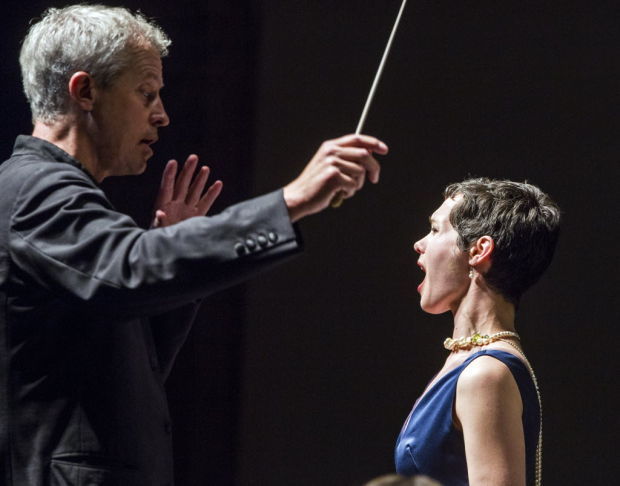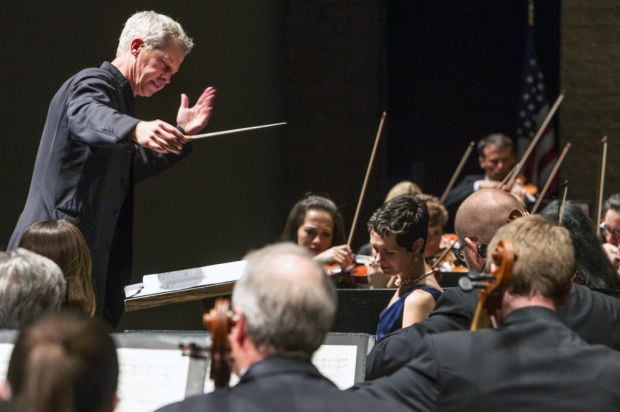Who would have thought that on a night in March when the Arizona Wildcats were poised to beat their Pac-12 Tournament nemesis the UCLA Bruins, George Hanson would be the hottest ticket in town?
On Friday night, as the Wildcats were moments away from slipping past UCLA in the Pac-12 Tournament in Las Vegas, Hanson was at the Tucson Music Hall downtown, putting an exclamation mark on his 19-year career with the Tucson Symphony Orchestra. With more than 1,920 people along for the ride, Hanson performed one of the biggest concerts in the orchestra’s 90-year history.
It was the largest crowd for a TSO classics subscription concert since the Feb. 20, 2012, sold-out concert with Tucson Native American flutist R. Carlos Nakai. The audience is expected to be even bigger on Sunday — 2,000 of the 2,289 seats were sold as of Friday — when Hanson conducts his last subscription concert as TSO music director.
It would be easy to say that the audience Friday was there to see the TSO perform Gustav Mahler’s magnificent Symphony No. 3 for the first time in its 90-year history. But Friday night was all about Hanson. A final goodbye, one last chance to see him bob and weave behind the podium and coax such a wonderful sound from his cadre of very fine musicians.
But it also was a chance for Hanson to bring his career here full circle. He was finally able to do a symphony that he had been itching to perform in Tucson for the better part of his tenure and one that actually was on the books to be mounted back in 2006. The Mahler and several other works that season were yanked to avert a presumed financial disaster.
It was pretty wonderful watching Hanson Friday night, performing with so much vigor and passion. He packed the Music Hall stage with 40 women from the TSO Chorus, 20 vocalists from the Tucson Arizona Boys Chorus and 20 freelance musicians complementing the orchestra’s 85 members.
It was obvious from the way he drew such dark and complex colors from his orchestra and fine vocal performances from the choirs and alto soloist Emily Marvosh that he knows this music well. He brought out a sense of foreboding in the opening rumble of the brass and percussion assault, which melds gracefully into a sublime minuet. Hanson dispatched principal trumpet player Conrad Jones to the balcony to play a cornet solo and emphasized the boldness of the solo tenor trombone passage in the first movement, performed with wonderful richness by principal trombone Michael Becker.
Mahler Three has been around 113 years, but it had never been performed in Tucson before Friday night, and for good reason. It’s a behemoth work, not only because of the musical contingent required to pull it off. It clocks in at just shy of 100 minutes — almost as much time as it took the Wildcats to beat UCLA. It requires the patience and focus of audience and performers alike.
For the full duration, Friday’s audience clung to every note, patiently waiting until the final melody — the dreamlike motif we all recognize from the 1930s pop standard “I’ll Be Seeing You” — hung in the air. Even before Hanson put his arms down and took that “we’re finished” deep breath, audience members bolted to their feet. Their thunderous applause and prolonged shouts of “bravo” were not just for Hanson’s performance of Mahler; it was for 19 years of making Tucson a better place musically.







